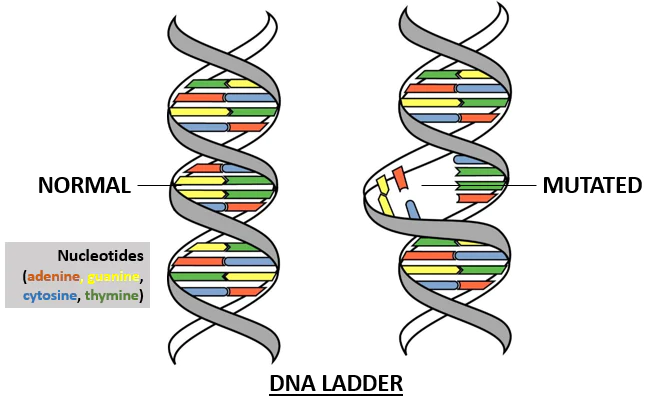
1/ When it comes to cancer genetics, I am sure we have all heard of Onco-genes or Tumor Suppressor genes. There is another set of critical genes in controlling cancer that most people haven't really heard about.
2/ These are the genes that control the many proteins and enzymes that regulate the integrity of the DNA itself. 

3/ We all know now that cancer starts with mutations to the DNA. There are many causes of the damage. It could be a simple mistake with the machinery in the cell that copies the DNA during cell division.
4/ These mistake are rare, but they do happen. There are enzymes designed to detect and repair those mistakes. Even with the repair machinery, some of those mistakes get through.
5/ The mutations could be caused by chemicals or ionizing radiation. These can cause direct damage to the DNA in the form of deamination, alkylation, or base fusions. There are many enzymes designed to find deamination, alkylation, miss-matches or even fusions. 

6/ There are several pathways that detect various DNA damage and initiate repair. They are Base Excision Repair (BER), Nucleotide Excision Repair (NER), Single Strand break repair, and even Double stranded break repair.
7/ There are many of these pathways. You probably heard of Homology Directed Repair and Non-Homologous End joining from Gene Editing. These are 2 of the many DNA repair pathways that fix double stranded breaks. 

8/ Some of the other enzymes responsible for fixing DNA you might have heard of are BRACA1 and BRACA2 which play a role in Breast cancer for women and Prostate cancer for men. Another of these would be PARP which plays a role in Base Excision repair and Homology Directed Repair.
9/ What happens when one of these genes that are responsible for verifying the integrity of DNA itself mutates? This is where Genomic Instability happens. The loss of the ability of the DNA to fix itself.
10/ This allows for rapid and rampant genetic mutations. This is where you get Chromosomal rearrangements also known as Chromothripsis. You can get gene deletions, gene duplications and even gene inversions. 

11/ You might have heard of the most famous translocation mutation called the Philadelphia Chromosome. This is a very common translocation in CML where part of the chromosome 9 and 22 swap a chunk of their DNA. 

12/ This translocation places an oncogene right next to a promoter that has much higher activity than it normally would have. It leads to a higher level of growth of completely normal myeloid cells.
13/ Genetic instability takes the safety checks off the DNA which unleashes the potential for all kinds of new mutations in the DNA. This is actually one of the hallmarks of cancer. 

14/ When a cell begins to hypermutate because it has completely lost control of checking the DNA properly. This leads to the rapid ability of each generation of cancer cells to evolve.
15/ Cancer cells become an uncontrolled experiment in rapid evolution with many new mutations being developed and tested in a living tissue.
• • •
Missing some Tweet in this thread? You can try to
force a refresh






